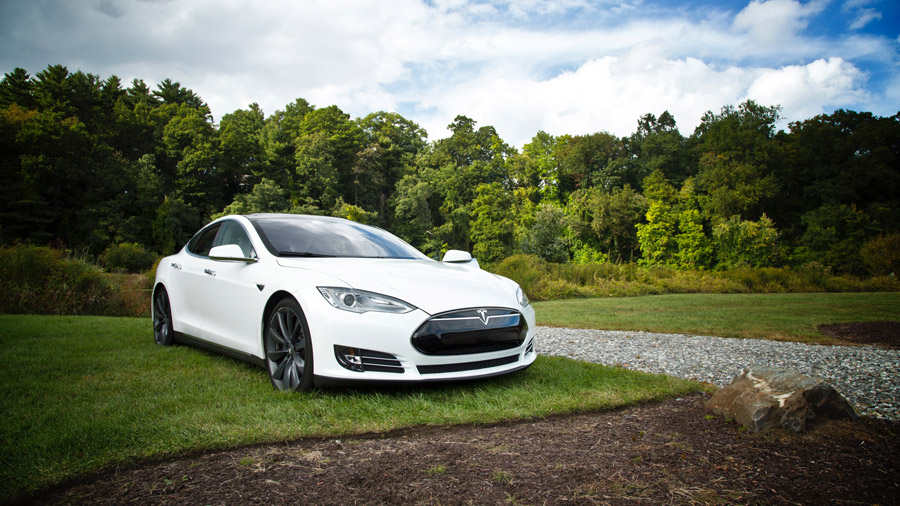
Electric vehicles no imminent danger to global lubricants demand
By Dr. Raj Shah and Dr. Mathias Woydt
E-mobility is as old as the internal combustion engine (ICE). In 1896, the American Electric Vehicle Company presented a full electric vehicle. Five years later, automotive engineer and founder of the Porsche car company, Ferdinand Porsche, offered the “Lohner-Porsche,” a vehicle where the electric motors were integrated into the car’s wheels.
Despite this early introduction, more than 120 years later, electric vehicles (EV) have failed to penetrate the market. It is only now that EVs are becoming a formidable opponent to the almighty ICE. Several prominent car manufacturers, including Volkswagen, General Motors and Volvo, have vowed to solely produce EVs in the future — to facilitate reductions in carbon emissions. In addition, some European nations have announced moratorium dates on the sale of vehicles that burn gasoline or diesel fuel.
An array of techniques to incentivise and prioritise the purchase of EVs have also been implemented. Norway, which boasts the highest adoption rate of EVs in the world, has tested a myriad of enticements such as allowing EVs to drive in bus lanes and free public parking. Other countries offer tax breaks, stimulus payments or a combination of the two. China, the world leader in electric car volumes, has several cities that issue special license plates for EVs — enabling consumers to bypass the stress and lottery of obtaining vehicle licenses.
EVs are set to gain increasing market share, faster than has happened in the past. In 2015, more than half of the world’s lubricant demand originated from the automotive industry. Therefore, the transition to EVs will have implications for the entire lubricants market. However, proponents of EVs, who are forewarning the imminent demise of the oil industry, should dust off their crystal balls. This loss in lubricant volume will be compensated by the anticipated growth in mobility.
Yes, EVs will alter the transportation milieu over the forthcoming decades. Though, the transformation will be evolutionary and poses no imminent danger to global oil demand to the mid-21st century. EVs will not be the death knell to oil — as digital was to film. Conventional gasoline- and diesel-powered automobiles will exist simultaneously, with significant growth potential on both sides. Oil will remain a global powerhouse, supported by demand growth in sectors such as petrochemicals, heavy industry, aviation, shipping and heavy transport. At least for now, these sectors are by-and-large sheltered from fuel switching.
In June 2019, Volkswagen announced a demand of 300 GWh battery capacity for 2025, 10 times Tesla’s existing giga factory in Nevada, U.S.A. But lithium and cobalt are limited, and nickel and copper face an upcoming scarcity beyond 2025, which e-mobility aggravates.
According to the International Energy Agency (IEA), the overseer of large, developed energy-consuming economies, an estimated 50 million EVs will be in operation by 2025, and 300 million by 2040, in comparison to five million electric vehicles on the road by the end of 2018. This growth is projected to reduce global oil demand by 2.5 million barrels per day (bpd) or about 2%. However, during the same period, the stock of vehicles with ICE will rise from 1.3 billion to 2.1 billion. Internal combustion will remain the primary propulsion for the foreseeable future and must be fed by suitable, environmentally compatible, energy sources.
As electrification steadily increases, light vehicle lubricants will indeed witness a decline in demand in Europe and North America by 2030, but will see growth in other regions. Though, one must keep in mind that the global motorization rate is only ~14% of the population; whereas in America and Europe motorisation ranges between 65-85%. The global motorization rate is expected to grow to ~23%. This growth will happen in Asia, Africa and South America.
Overall, the IEA expects net oil demand will be 12 million bpd higher in 2040 compared to 2016. This prediction is contrary to the new “peak demand” movement that has sprung up among industry watchers — and is as misguided as the “peak oil” supply predictions of a decade ago.
Global consulting firm McKinsey & Company has conducted a comprehensive market study that includes detailed projections through 2035. The research indicates that overall lubricant volume growth would not cease but instead continue at a slightly reduced rate in years to come. Their primary conclusion was that “while volume growth may be flattening, there is still room for value-pool expansion.”
The report does suggest that road-transport demand (currently 40% of the total) will reach its apex within the next five years. Thereafter, slow attrition of transport demand will occur as the share of electric vehicles and ride shares increase, alongside longer change intervals for the remaining ICE vehicles.
However, the road transport sector will continue to grow as higher-margin synthetic lubricants expand to take a 70% market share by 2035. The lion’s share of lubricant demand is comprised of non-transport and industrial consumption which will continue to grow steadily, more than compensating for diminishing transport demand.
 Even with stalling growth in areas such as Europe and North America, lubricant suppliers can avoid shrinking in step with the market by expanding market share in Asia and other developing markets; in addition to, zeroing in on higher-margin products like synthetics and high-quality lubricants for the burgeoning hybrid electric vehicle (HEV)/plug-in hybrid electric vehicle (PHEV) market.
Even with stalling growth in areas such as Europe and North America, lubricant suppliers can avoid shrinking in step with the market by expanding market share in Asia and other developing markets; in addition to, zeroing in on higher-margin products like synthetics and high-quality lubricants for the burgeoning hybrid electric vehicle (HEV)/plug-in hybrid electric vehicle (PHEV) market.
Despite the effect EVs will have on engine oils, not all automobile lubricants are in peril. EVs still require greases and most need gear oils, albeit currently accounting for a small percentage of automotive lubricant sales, to lubricate their differentials, chassis and wheels. Functionalised coolants are required for the batteries, and drivers will still need shock absorber fluids to deliver a smoother ride, and brake fluids to stop.
The way OEMs seem to be specifying lubricants is for them to be “compatible across the board,” says Lubrizol’s Global Manager For Transmission Lubricants, Michael Gahagan. Speaking at an industry conference in early 2018, Gahagan advised that today’s hybrids can, and often do, employ traditional driveline fluids, whereas manufacturers would do well to adopt new, dedicated fluids that are better able to protect and ensure the smooth functioning of electrified drivetrain parts.
New developments are needed as gear oils, coolants and greases encounter electrical modules, sensors and circuits — as well as insulating materials or special plastics that are themselves exposed to electromagnetic fields. Gahagan underscored the importance of developing novel EV fluids with electrical conductivity and related safety considerations in mind. EVs have a system voltage of up to 48 volts in a basic hybrid, in comparison with 12 volts in a conventional ICE vehicle.
Of major concern is electrical charge in the lubrication fluid. This is most prominent at the power split, where the oil is in contact with the electric motor. Therefore, fluids made to hybrid and EV specifications would require the correct electrical properties and compatibility with the insulation.
According to Gahagan, there are two main factors that must be addressed when it comes to conductivity of fluids. If the conductivity is too high, there is a possibility of current leaking — which could have deadly consequences for a passenger who comes in contact with charged parts; conversely, if conductivity is too low, electrostatic charge can build up. This causes degradation of the fluid, compromising its protective features; it can also lead to arcing, which can damage bearings and seals.
About the authors
Dr. Raj Shah is a director at Koehler Instrument Company in New York, where he has lived for the last 25 years. He is an elected Fellow at STLE, NLGI, Energy Institute and the Royal Society of Chemistry and a Chartered Petroleum Engineer.
Dr. Mathias Woydt is managing director of MATRILUB Materials Ι Tribology Ι Lubrication, with more than 33 years of experience in R&D and with more than 280 publications and 51 priority patents filed. He is also the vice-president of the German Society for Tribology.








